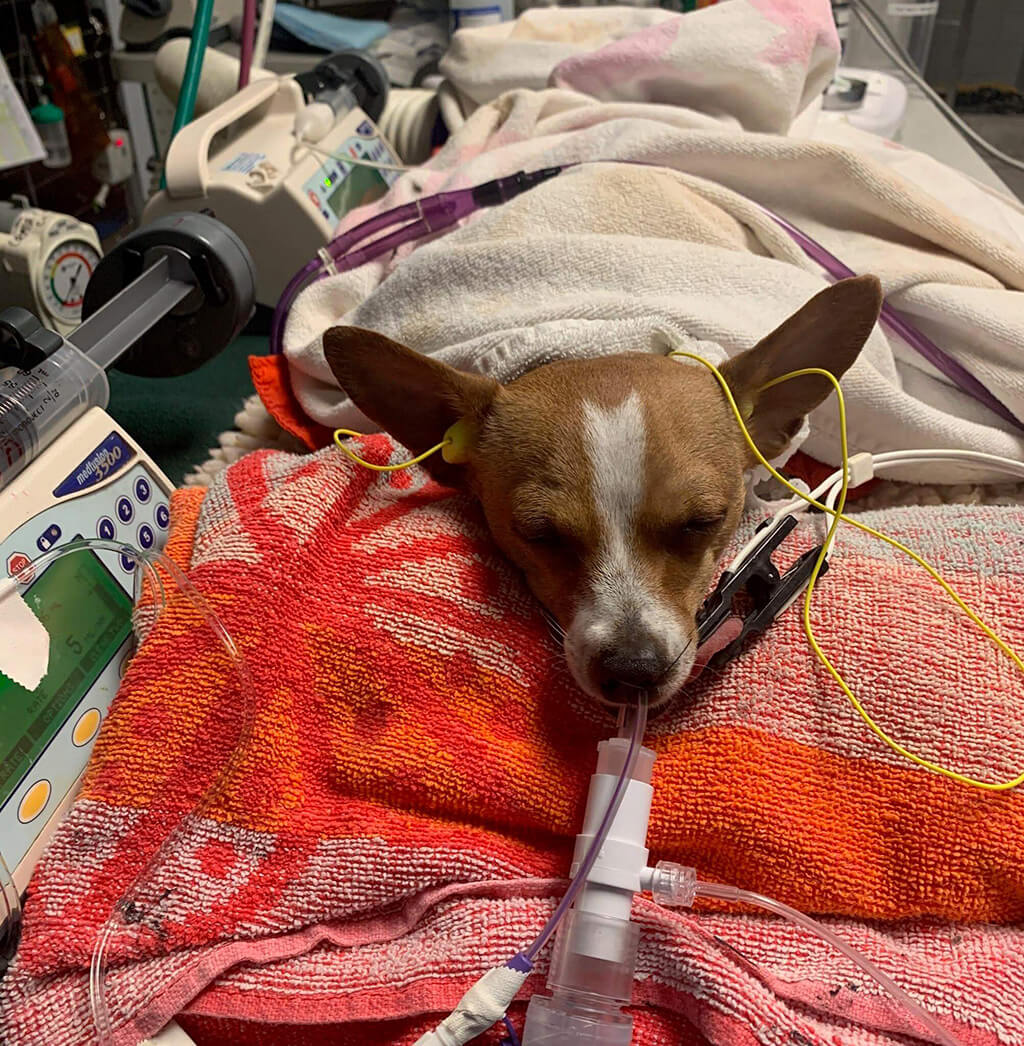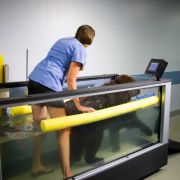Date:
 At Charleston Veterinary Referral Center, our focus and expertise is on stabilizing and treating sick, ill, and critical patients with conditions such as trauma, toxin exposure, gastrointestinal disease, cardiovascular disease, immune-mediated disease, pulmonary disease, neurologic disease, and/or metabolic disease. Among the technology that we use to support the most critical pets is a ventilator. This important piece of equipment allows us to offer the highest level of emergency and critical care, and is required for us to maintain our VECCS Level 1 certification.
At Charleston Veterinary Referral Center, our focus and expertise is on stabilizing and treating sick, ill, and critical patients with conditions such as trauma, toxin exposure, gastrointestinal disease, cardiovascular disease, immune-mediated disease, pulmonary disease, neurologic disease, and/or metabolic disease. Among the technology that we use to support the most critical pets is a ventilator. This important piece of equipment allows us to offer the highest level of emergency and critical care, and is required for us to maintain our VECCS Level 1 certification.
When To Use a Ventilator
Mechanical ventilation is a means of treatment that allows a ventilator machine to take over the work of breathing in patients that are unable to maintain adequate oxygen and carbon dioxide levels.
Pulmonary failure implies that the lungs are damaged in some way and cannot exchange oxygen properly no matter how hard the pet breathes. Ventilatory failure means the patient’s thoracic or chest wall excursions cannot adequately eliminate carbon dioxide.
Common Causes of Pulmonary Failure

- Pulmonary contusions from trauma (commonly vehicular trauma or blunt impact trauma)
- Pneumonia
- Non-cardiogenic pulmonary edema (from near-drowning, strangulation or electrocution)
- Congestive heart failure
- Some forms of pneumonia
Patients with pulmonary failure tend to have a more guarded prognosis while those with congestive heart failure and non-cardiogenic pulmonary edema carry the best prognosis for successful ventilation. Acute respiratory distress syndrome, the most severe form of lung disease, is another form of pulmonary failure that is often fatal in animals and often requires prolonged mechanical ventilation. Recommending ventilation for patients with reversible underlying causes (such as pulmonary contusions, non-cardiogenic pulmonary edema, congestive heart failure or pneumonia) and utilizing the latest ventilatory strategies helps maximize positive outcomes.
Common Causes of Ventilatory Failure
- Accidental drug overdoses and toxicities (commonly human medication ingestion)
- Botulism
- Tetanus
- Neuromuscular paralysis such as myasthenia gravis, polyradiculoneuritis, snake envenomation (Coral Snakes, Timber Rattlesnakes or Canebreak Rattlesnake)
- Tick paralysis (not present in the Southeast U.S. but common in Australia)
- Neurologic surgery; patients living with cervical disc disease or tumors

In most cases of ventilatory failure, the lungs are healthy and completely normal. Temporary mechanical ventilation is often required because the patient is unable to initiate breathing due to the suppression of the neurologic stimulus to breathe or is unable to adequately move the chest wall and create an effective breath. Once the underlying cause is addressed and treated, patients can be successfully ‘weaned’ from the ventilator and begin to breathe normally on their own.
Ventilator Outcomes
Studies on patients with severe enough disease to require mechanical ventilation have survival times reported to be 20-75% depending on the underlying disease process. Success is also affected by advancements in ventilation capabilities and intensive care.
Recently, CVRC successfully ventilated several patients with positive outcomes:
- A patient with pulmonary failure caused by vehicular trauma
- A patient with neuromuscular paralysis as a result of ingesting human medication
- A patient requiring ventilatory support due to severe seizures and neurologic disease
- A patient requiring ventilatory support secondary to cardiopulmonary arrest
VECCS Level 1 Certification

CVRC is proud to be the only Veterinary Emergency and Critical Care Society (VECCS) Level 1 Certified Veterinary Hospital in South Carolina.
The certification program designates three levels (I through III) based on operating hours, equipment and personnel. Level I is the highest certification level, and the emergency and critical care facility must have the resources and specialty training necessary to provide sophisticated and comprehensive emergent and critical care.
The hospital must be open to receive small animal emergency patients 24 hours a day, 365 days a year, and is required to have a board-certified critical care specialist on staff full-time and available for consultation 24/7. Maintaining this level of care is part of our commitment to medical excellence for you and your pets.


















